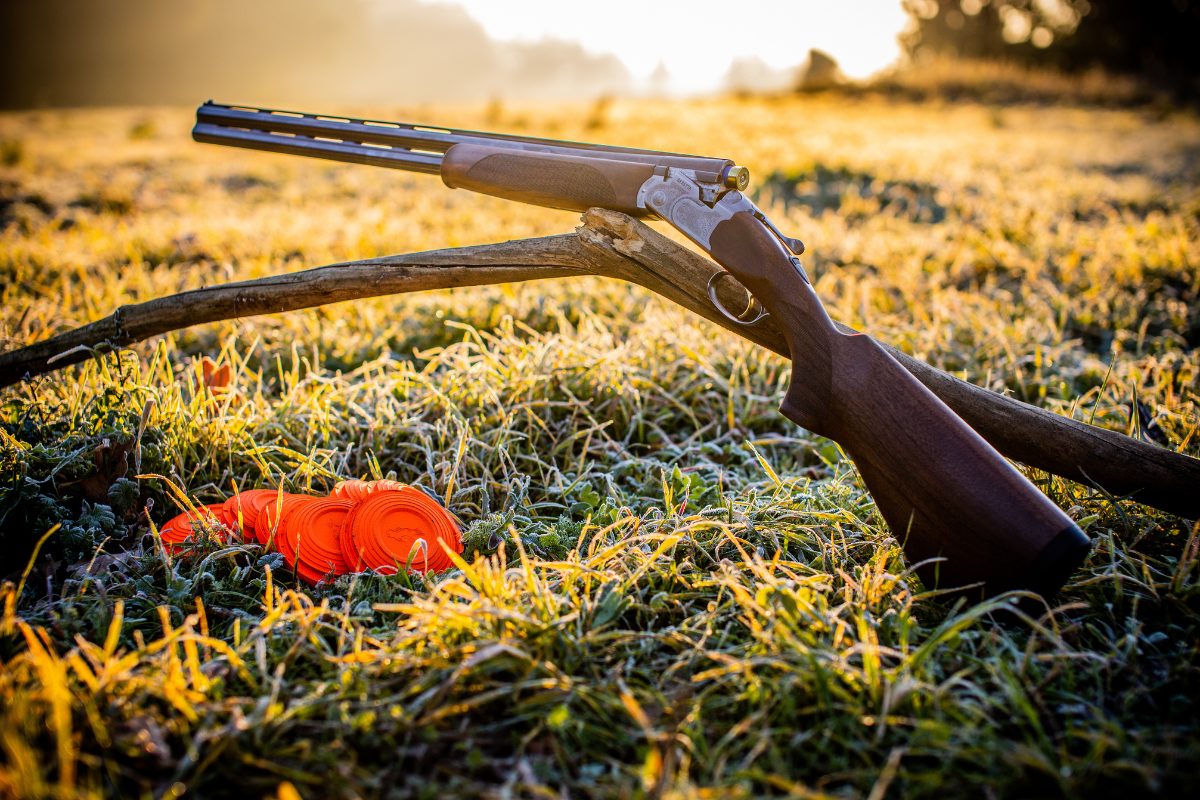
 0
0 
Clay pigeon shooting with shotguns is some of the most fun shooting there is. Few things are more satisfying than seeing a clay pigeon be reduced to dust after a perfect shot.
Skeet and trap shooting are the two most common types of shooting that use clay pigeons. They are a great way to practice for bird hunting, or even a great competitive sport to get into.
With the right skills and tips, you will soon be a proficient clay pigeon shooter for skeet and trap. My tips should help you get started or improve your skills at the clay range regardless of experience level.
Shot size selection
The first step for excelling at clay pigeon shooting is selecting the right shot size. This may seem obvious, but the wrong shot size will make hitting clays much harder on you and your shoulder.
Never use a shot size greater than #7. The best sizes are #7 ½ or #8, which are usually marketed as target loads. Target loads are the most cost effective and will provide a small shot size and a large shot pattern.
Too large of a shot size will limit your shot pattern, and with the extra powder needed for larger shot sizes, your shoulder is sure hurt the next day.
Knowing your eye dominance
Everyone has a dominant and nondominant eye. Your dominant eye may or may not be the same as your dominant hand, so it’s important to know.
If you can, you should shoot clay pigeons with both eyes open to get the greatest field of view. However, if your eye and hand dominance are opposite, it will be difficult to hit your targets.
If you have an opposite hand and eye dominance, you can simply close the opposite eye as the hand you shoot with. This will eliminate most of the issues with opposite hand and eye dominance.
Another trick is to place a piece of matte office tape to your eye protection on the opposite eye of the hand you shoot with. This will eliminate confusion with your eye dominance and still give you some additional field of view.
In the event you’re ambidextrous, it may be advantageous to shoot on the same side as your eye dominance. If your eye and hand dominance are the same, it will give you the greatest advantage at the clay range.
Instinctual shooting
Instinctual shooting is the name of the game for clay pigeon shooting. It may sound counterintuitive, but to be proficient you can’t spend too much time thinking about the shot.
Think about how you would throw a baseball. You don’t aim, you just visualize where you want it to go and with a little practice you can throw right into another player’s glove. The same is true for clay pigeon shooting.
Don’t think too much about having the perfect aim, just use the shotgun as an extension of your body and visualize what you want it to do.
This is where clay pigeon shooting differs greatly from rifle shooting. While in rifle shooting you take your time to line up the perfect shot, clay pigeon shooting is quick and instinctual, leaving little time to think but only to act.
If you act more on instinct, you will become a much better clay pigeon shooter. Once you practice and fine tune the art of instinctual shooting, it will become second nature.
Don’t wait for the perfect shot
Going along the same idea of instinctual shooting, the number one tip I give when I take people clay pigeon shooting for the first time is don’t wait for the perfect shot.
By the time you wait to perfectly line up the front bead with the clay pigeon, it will already be out of range, and you will miss the target entirely. This is especially true for trap shooting, where the clay is thrown away from the shooter, but also applies to skeet shooting in many situations.
Shotguns with target loads have a fairly short range, so you only have a few seconds before its too late. Because clay pigeons are moving targets, the quicker you react, the more likely you are to hit your target.
You may not always have the perfect form or sight picture, but using your instincts to react to the target quickly will help you connect with more clay targets.
Leading the target
Leading your target is a requirement for clay pigeon shooting. Clays are moving targets, so you have to aim where the target is going to be, not where it is.
This may seem like an obvious tip, but leading the target is the most difficult aspect of clay pigeon shooting and what most people get wrong. There is know formula or perfect way to measure how much you need to lead, so it will take a good bit of practice to become proficient.
Leading the target again goes back again to mastering the art of instinctual shooting. You must make your best guess on how much you need to lead the target in the moment, and hesitating for even a split second means you will miss the target.
Practice is the key to knowing how to lead clay targets. No one can do it perfectly the first time around, so know that you will improve over time.
Conclusion
Clay pigeon shooting is an affordable and incredibly fun activity for all ages and experience levels.
Whether you have competitive trap or skeet shooting aspirations, want to practice for hunting season, or you simply want to enjoy a fun day at the clay range, these tips should help you along the way.
Just remember to clear your mind and trust your instincts. What makes clay shooting so much fun and interesting is that you don’t have time to think. The best clay pigeon shooters have mastered the art of instinctual shooting through years of practice, and you can do the same.

 0
0